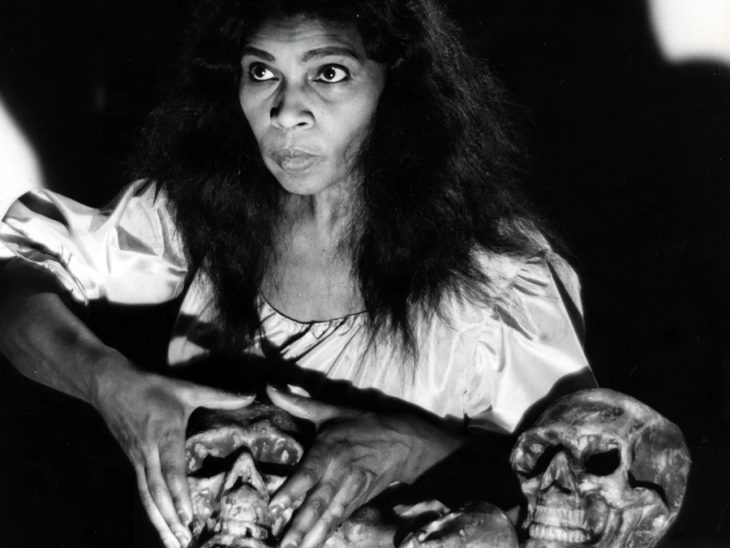
Word of the Day Crevice
Today’s word of the day, courtesy of The Brittanica Dictionary, is crevice. A crevice is “a narrow opening or crack in a hard surface and especially in rock” (https://www.britannica.com/dictionary/eb/word-of-the-day). Dictionary.com gives the definition as “a crack forming an opening; cleft; rift; fissure” (https://www.dictionary.com/browse/crevice).
The word entered the English language in the “mid-14c., crevace, from Old French crevace (12c., Modern French crevasse) “gap, rift, crack” . . . from Vulgar Latin *crepacia, from Latin crepare “to crack, creak” (see raven). Between Latin and French the meaning shifted from the sound of breaking to the resulting fissure” (https://www.etymonline.com/word/crevice#etymonline_v_343). Keep in mind that when linguists put an asterisk in front of a word, they are telling us that it is a reconstructed word, that there is no extant example of the word in the literature. The reference to the shift in meaning refers to a kind of metonymy, a “a figure of speech that consists of the use of the name of one object or concept for that of another to which it is related, or of which it is a part, as ‘scepter’ for ‘sovereignty,’ or ‘the bottle’ for ‘strong drink,’ or ‘count heads (or noses)’ for ‘count people’” (https://www.dictionary.com/browse/metonymy). So a word in Latin that refers to a breaking sound, like the sound a raven or crow makes (and the words for those birds are onomatopoetic), comes to mean something that is the result of such a sound.
On this date in 1955, Marian Anderson sang at the Metropolitan Opera, performing the role of Ulrica in Giuseppe Verdi’s Un ballo in Maschera.
Anderson was born in Philadelphia in 1897 to a merchant and a schoolteacher. They were devout Christians , and her Aunt Mary got her to join the children’s choir at Union Baptist Church when she was just six years old (https://en.wikipedia.org/wiki/Marian_Anderson). She often performed solos or duets with her aunt. Soon she was making money singing at local events. Although her father and grandfather both died young, making money scarce, the black community around her raised enough money for her to have music lessons and go to South Philadelphia High School.
She applied to the Philadelphia Music Academy, but she was told that the school did not accept black students. Fortunately, with the donations from the black community, she was able to continue private lessons. Then she got a break. The New York Philharmonic had a contest, which Anderson won, giving her the opportunity to perform in concert with the orchestra. Soon she had an agent and was performing in a variety of places, though there were still some places where she was not allowed to perform.
She did a European tour in the early 1930s. She met a pianist in Scandanavia who became her regular accompanist and her coach, and she met the composer Jean Sibelius. They became friends and professional partners, with Sibelius adapting and composing songs for her. In 1935, she returned to the USA and, with a different manager, toured. Although she was a best-selling artist, she sometimes ran into racial discrimination. In 1937, she was denied access to a hotel in Princeton, NJ, but she was taken in by another famous person with whom she became friends: Albert Einstein.
In 1939, Anderson was denied the opportunity to perform at Constitution Hall by the president of the Daughters of the American Revolution. Washington, DC, at the time was a segregated city. The concert promoters tried to get a different venue, but they failed. Because of this incident, thousands of DAR members quit the organization, including Eleanor Roosevelt. As the pressure mounted on the city, a concert was finally approved on the steps of the Lincoln Memorial on Easter Sunday, April 9. The concern attracted approximately 75,000 people and was broadcast to the nation. Two months later, Roosevelt award Anderson the Springarn Medal for outstanding achievement, an award given annually by the National Association for the Advancement of Colored People (NAACP). Four years later, she was invited to perform at Constitution Hall as a benefit for the Red Cross.
Anderson was invited to perform with many opera companies during her career, but while she performed arias in concert and on recordings, she generally refused. Her concern was that she had no training as an actor. But in January of 1955, she did perform that role of Ulrica for the Met. She was the first, but not the last, African-American to sing for the Met, and in her autobiography, My Lord, What a Morning, she claims that she was trembling. She was made a permanent member of the company even though she never performed with it again.
Marian Anderson’s voice was not like that of a crow, but it certainly created a crevice. But it was not a crevice in a rock; it put multiple cracks in the racial discrimination that was prevalent in the USA in the early 20th century. With the help of her community, she overcame that discrimination and experienced a career like few others.
By the way, if you ever have the opportunity to go to the Metropolitan Opera in New York City, do take it. I have been there once, back in 1977. In the afternoon, the group I was with got to do a backstage tour, which was incredible. Then in the evening we saw Thaïs with Beverly Sills and Sherrill Milnes. I did not grow up with an interest in opera, though my father was passionate about classical music. But as part of a class on performing arts, I learned to really appreciate opera. While takes a little study to get into it, the benefit is immense.
Today’s image is “Contralto Marian Anderson in the role of Ulrica from a Metropolitan Opera production of Verdi’s Un ballo en maschera in 1955. Anderson was the first African-American soloist to appear at the Met. Sedge LeBlang/Metropolitan Opera Archives” (https://www.npr.org/sections/deceptivecadence/2015/01/07/375440168/marian-andersons-groundbreaking-met-opera-moment).